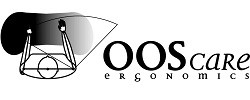Correct posture for sitting in offices
Generally in offices people are performing tasks using fine motor skills, utilising their arms, hands and fingers. Sitting allows humans to stabilise their trunks and heads while having free movement of the arms and hands for fine work with less effort than standing. However, the stability sitting offers tends to encourage immobility that is not good for the muscles. It is important to recognize that, ideally, sitting is not a static posture but a dynamic activity. People sitting should try to change posture every 10-15 minutes. No one should sit in exactly the same posture for very long, and at a minimum, every hour a person should get out of their chair and walk around.
By designing the work system it is possible to incorporate these changes without loss of productivity. For example, a person who is typing letters, printing, photocopying and filing can organise the tasks, so that instead of typing all the letters in one session then printing and photocopying them as one job, they intersperse the tasks required throughout the day. Ensuring there are different tasks required throughout the day, which encourages different postures, can help alleviate many of the problems people experience due to sitting for many hours.
To sit for long periods at work people need a padded, suitably sized chair that can be adjusted in seat height and angle as well as lumbar support height. The lumbar support must be firmly padded so that it can fit snugly in the small of the back.
A seat that allows adjustment into a forward tilt is highly desirable. A forward tilt increases the angle between the hip and the back, and people find it easier to keep the curve in the small of their back. Many people with back pain find this increase in angle beneficial.
The upper arms should hang relaxed beside the body. The shoulders should not be lifted. There should be no pressure points between the person and the chair. The person should have clearance between the seat front and calves while the lumbar spine is supported by the backrest.
Postures recommended when sitting encourage a “tall” back with natural curves – an “S”-shape instead of a slouching “C”-shape. By aligning ears, shoulders and hips vertically, muscles do not need to work as much to sustain the postures.
Remember: change in posture is important and muscles are designed to move.
